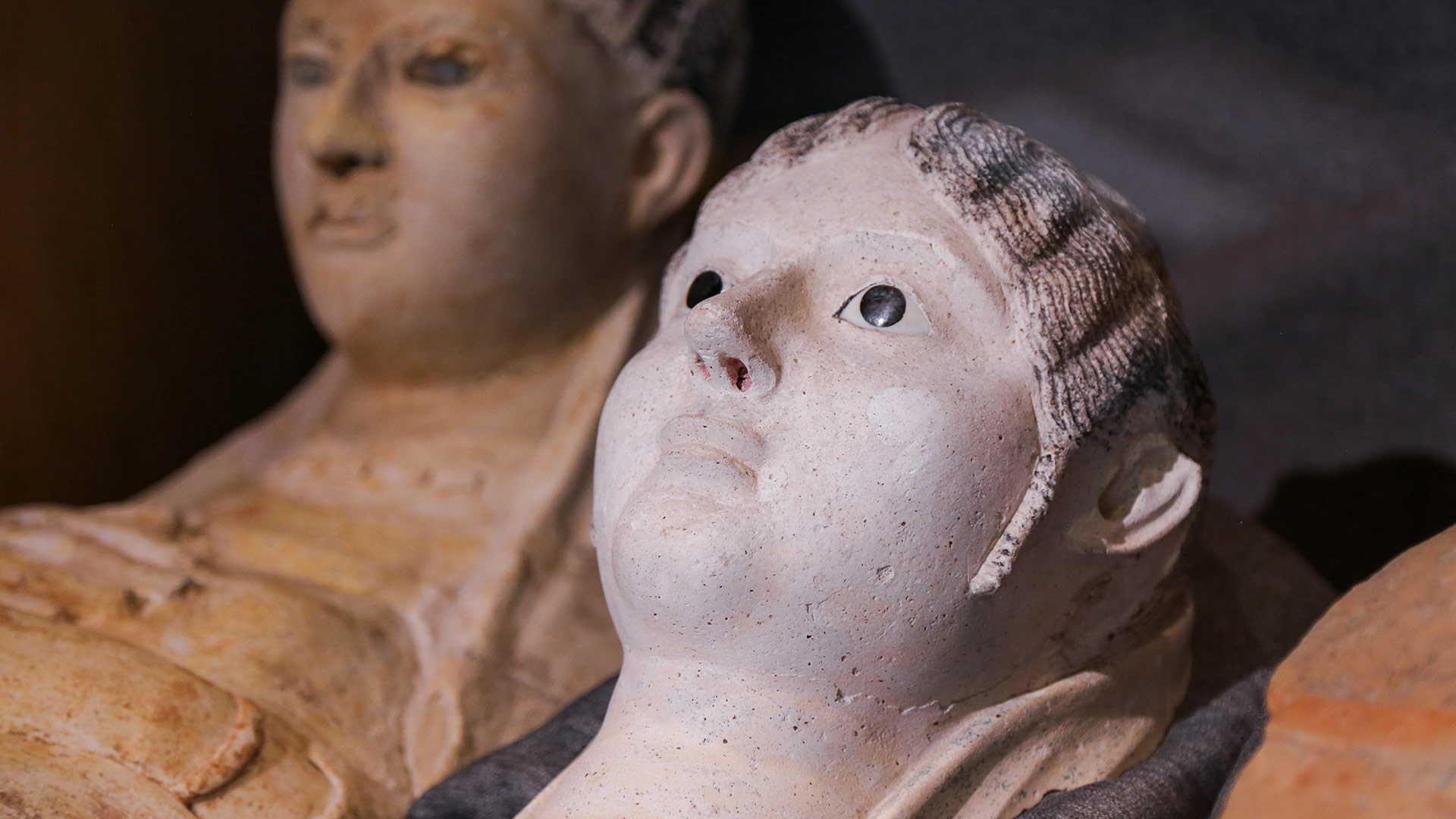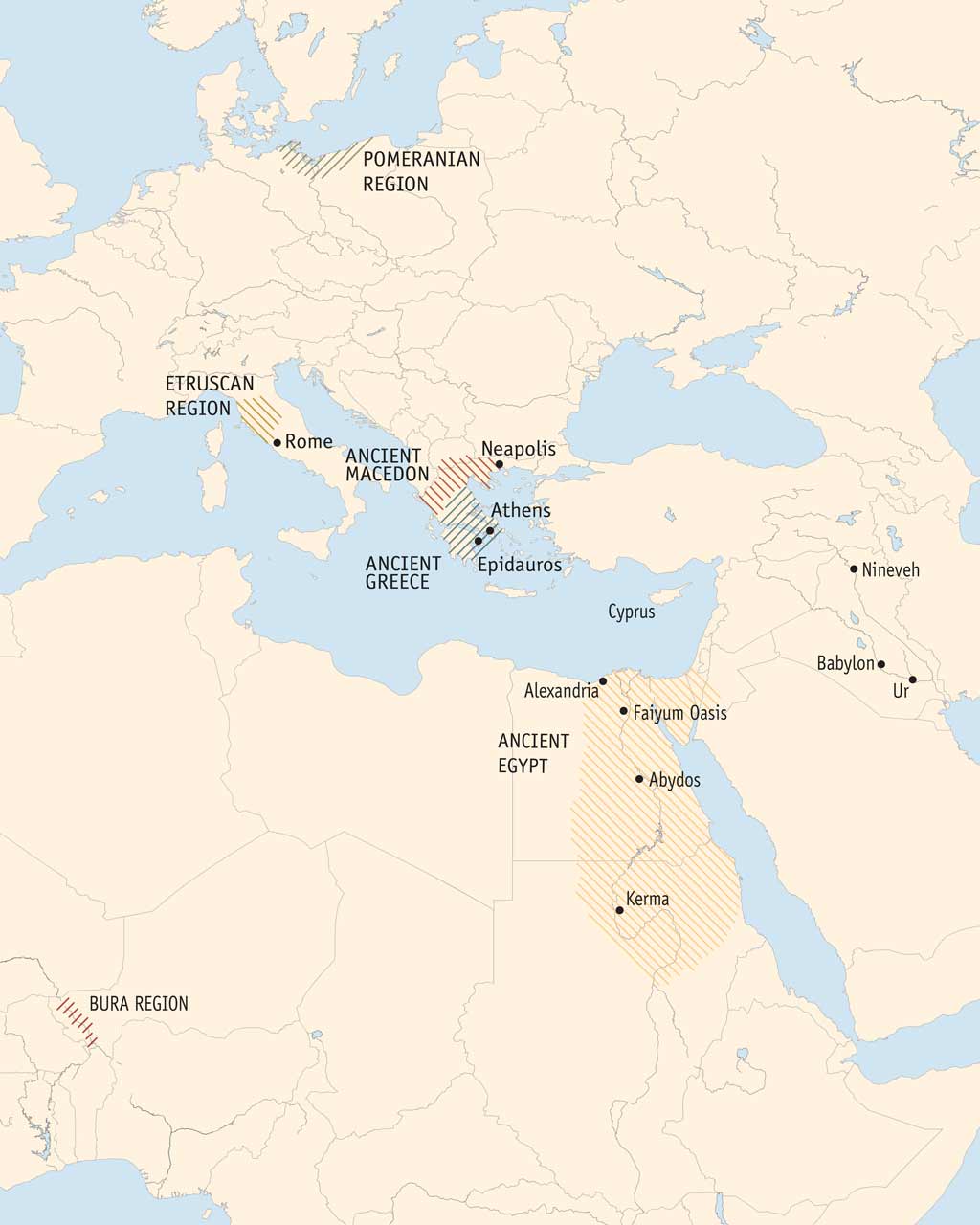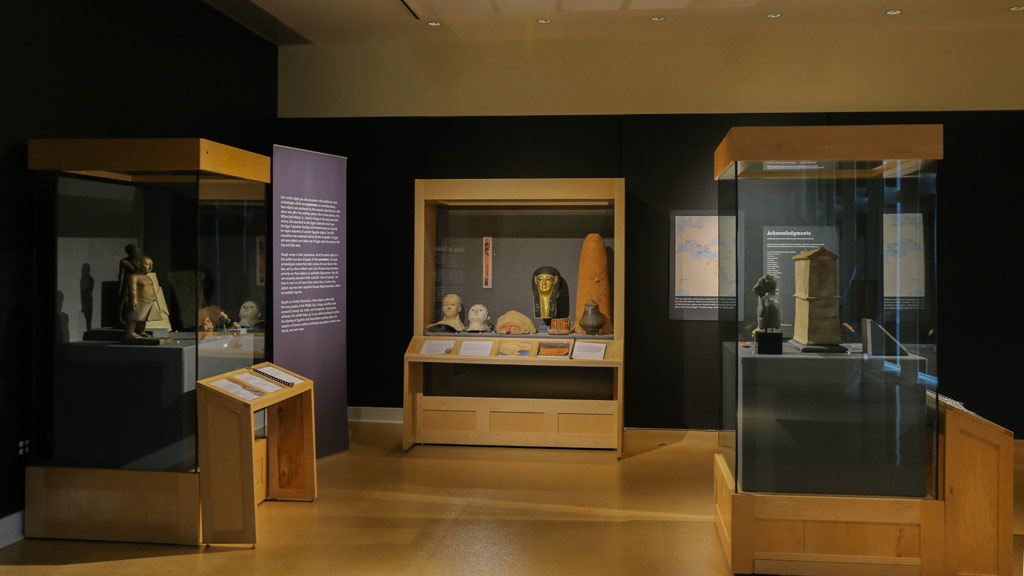
Our bodies are constantly changing. From birth to death, through experiences such as illness, disability, and pregnancy, the fluctuating material of our bodies is the medium of our lives. This variability makes the human experience both terrible and wonderful.
"Crisis" (κρίσις) is an ancient Greek word meaning decision or judgement. It is a turning point, a knife’s edge, a moment in time in which many possibilities exist simultaneously. In Greek, a crisis can be an opportunity as well as a threat. Despite the negative connotations of “crisis” in English, ancient crises may turn out for the better.
Drawing from the Spurlock’s extensive collection of ancient Mediterranean artifacts and modern reproductions, this exhibit explores how ancient cultures navigated bodily crisis through art. By representing the human body at important moments of change, ancient people investigated, remembered, mourned, celebrated, and protected themselves from harm.
By focusing on death, disability, and monstrous transformation, this exhibit also directly challenges present-day fears of bodies that depart from a perceived norm. Visitors familiar with Greek and Roman sculpture of idealized bodies (like the plaster cast collection in the Spurlock’s Ancient Mediterranean Gallery) may be surprised at the many different ways the ancient body was imagined.
Provenance
Each ancient object you will encounter in this exhibit has what archaeologists call its own provenance, or ownership history. Some objects were purchased by the museum’s early directors while others were gifts from wealthy patrons. One of these patrons, Mrs. William Gold Hibbard, Jr., lived in Chicago in the early twentieth century. She subscribed to the Egypt Exploration Fund (now the Egypt Exploration Society) and donated money in exchange for regular shipments of ancient Egyptian objects. The EEF’s excavations were conducted during Britain’s occupation of Egypt and many objects were taken out of Egypt under the pretense that they had little value.
Though various in their provenance, all of the ancient objects in this exhibit have been stripped of their provenience, the larger archaeological context that tells scholars the most about when, how, and by whom artifacts were used. Because early excavators primarily saw these objects as profitable display-pieces, they did not necessarily document their scientific “chain of custody,” and there is much we will never know about them. In some cases, objects may have been acquired through illegal excavations. Others are probably forgeries.
Despite our limited information, these objects confirm that the many peoples of the Middle East, Europe, and Africa were connected through war, trade, and immigration. Spanning two millennia, this exhibit helps us to see cultural exchange in action: the blending of Egyptian and Greco-Roman painting styles, the adoption of Etruscan pottery techniques by peoples in what is now Poland, and much more.
Acknowledgements
Curated by Professor Clara Bosak-Schroeder, Department of Classics with the generous support of the Provost’s Office, the H. Ross and Helen Workman Gallery of Classical Civilization Fund, and the Illinois Arts Council Agency.
Museum Exhibit Staff
- Christa Deacy-Quinn
- Briella Henderson
- John Holton
- Dery Martínez
- Abigail Padfield Narayan
- Katya Reno
- Gavin Robinson
- Monica M. Scott
- Melissa Sotelo
- Travis Stansel
- Elizabeth Sutton
- Beth Watkins
Other Scholars
- Heba Abd el Gawad
- Mont Allen
- Katherine Blouin
- Jon Bosak
- Jay Crisostomo
- Megan Daniels
- Gareth Darbyshire
- Kevin Fisher
- Stephen Froedge
- Eduardo García-Molina
- Michelle Gilbert
- Bridgette Hammond
- Bet Hucks
- Jamie Jones
- Kyle Jordan
- Brett Kaufman
- Robyn LeBlanc
- Margaret Maitland
- Ky Merkley
- Alexandre Mitchell
- Asja Müller
- Alexandra Morris
- Stratos Nanoglou
- Wayne Pitard
- Christina Riggs
- Carly Silver
- Debby Sneed
- Shannon Stewart
- Anise Strong
- Chiara Sulprizio
- Carol Symes
- Jen Thum
- Angeliki Tzanetou
- Terry Wilfong
- The Premodern World Reading Group
Online Exhibit Team
- Jack Thomas
- Nicole Shoop

